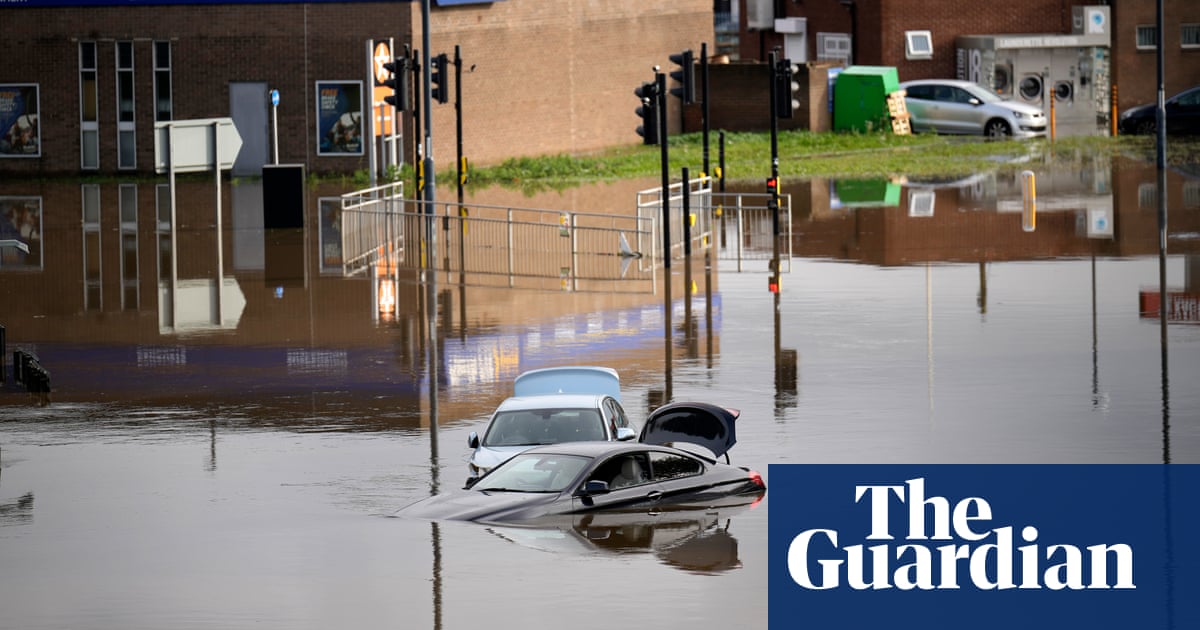
The UK is still facing significant travel disruption due to flooding caused by Storm Babet, as major cleanup operations get under way in the worst-hit areas and officials warn that flooding could take days to subside.
All weather warnings triggered by the storm had expired on Sunday, with drier and brighter weather expected, but four severe flood warnings, signalling danger to life, remained in place in Derbyshire and Wales.
The death toll from the storm rose to four on Sunday after police said they found the body of a woman in her 80s in a flat in Chesterfield on Saturday morning. Her death was thought to be “related to the flooding seen in the Chesterfield area”.
Investigations were continuing into the cause and circumstances surrounding her death, Derbyshire police said.
The Environment Agency (EA) said ongoing flooding was probable until Tuesday, with more than 200 flood warnings still in place across England. Scotland and Wales also have several flood warnings in place.
Katharine Smith, a flood duty manager at the EA, said: “Ongoing flooding is probable on some larger rivers including the Severn, Ouse and Trent through to Tuesday. EA teams are out on the ground and have operated flood barriers and storage areas. We advise people to stay away from swollen rivers and urge people not to drive through flood water as just 30cm of flowing water is enough to move your car.”
Along with eastern Scotland, where a second red “danger to life” weather alert in a week expired on Saturday evening, Yorkshire and the east and West Midlands have been worst affected by flooding.
There have been four deaths since the storm took hold on Thursday. A man in his 60s died when he was swept away by flood water in Shropshire on Friday, and on the same day a 56-year-old man was killed when a falling tree hit a van near Forfar in Scotland. A 57-year-old woman was swept away in a river in Angus on Thursday afternoon.
Police Scotland said they were continuing to search for a driver reported to be trapped in a vehicle in flood water in Marykirk, Aberdeenshire, in the early hours of Friday.
One of the worst hit areas was Brechin in Angus, which was only accessible via boat on Saturday, and an evacuation order for the entire town was issued after the South Esk river burst its banks.
More than half of the staff manning a North Sea drilling platform were airlifted to other sites on Saturday after several of its anchors came loose during the storm.
Scotland’s justice secretary, Angela Constance, said that although flooding had receded, the impact of the storm “will be felt in communities for some time to come”. She said: “Over the coming days and weeks, we will stay in close contact with local authorities to support the people and businesses affected.”
ScotRail said the majority of its services would run as normal on Sunday, but a number of lines, including Aberdeen to Dundee and Inverness to Kyle of Lochalsh, remained closed.
Network Rail said “residual disruption” was expected across a number of routes on Sunday, mainly affecting Scotland, LNER services, Yorkshire and East Anglia.
Derby city council said it had seen record-breaking water levels in the River Derwent and warned cleaning up after the floods could take several days.
The Museum of Making, situated on a Unesco world heritage site on the banks of the Derwent in Derby, said it was exposed to substantial flood damage that was likely to lead to significant loss of income, as it called for donations to help its recovery.
